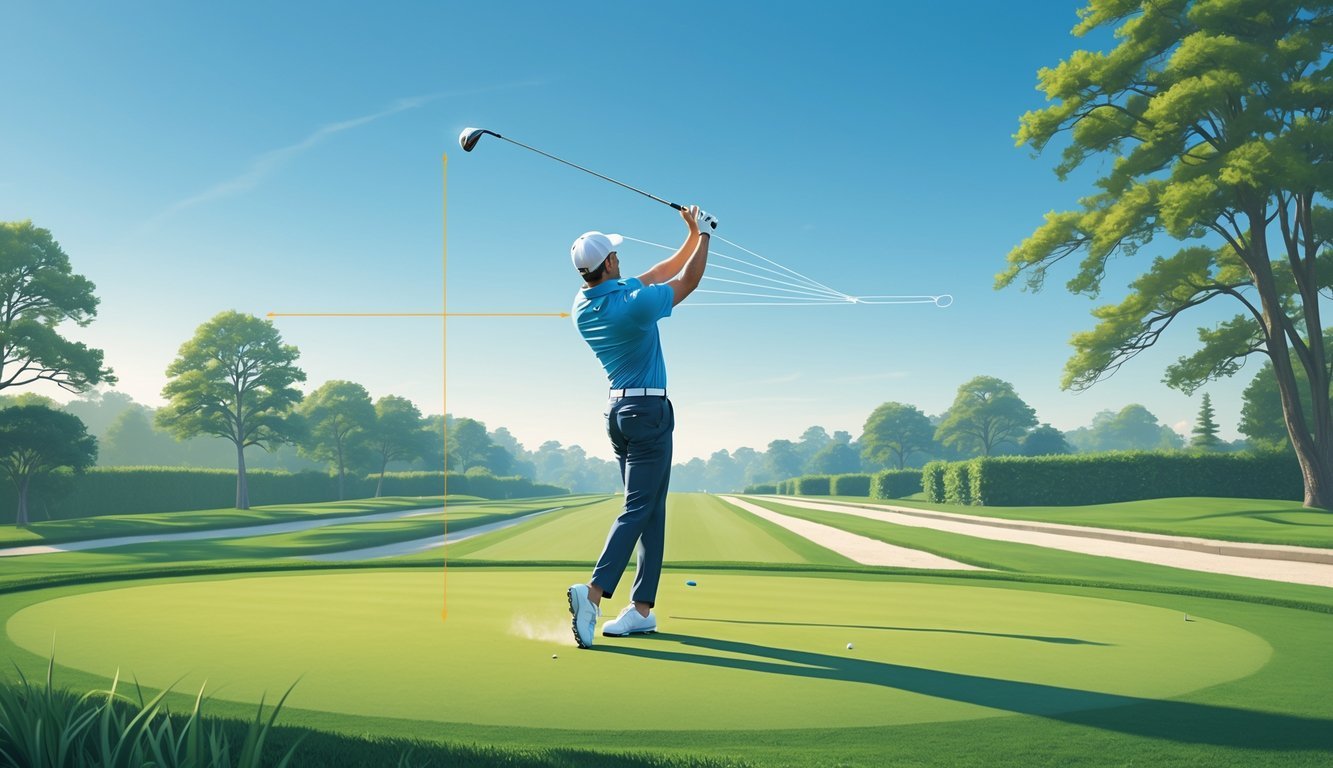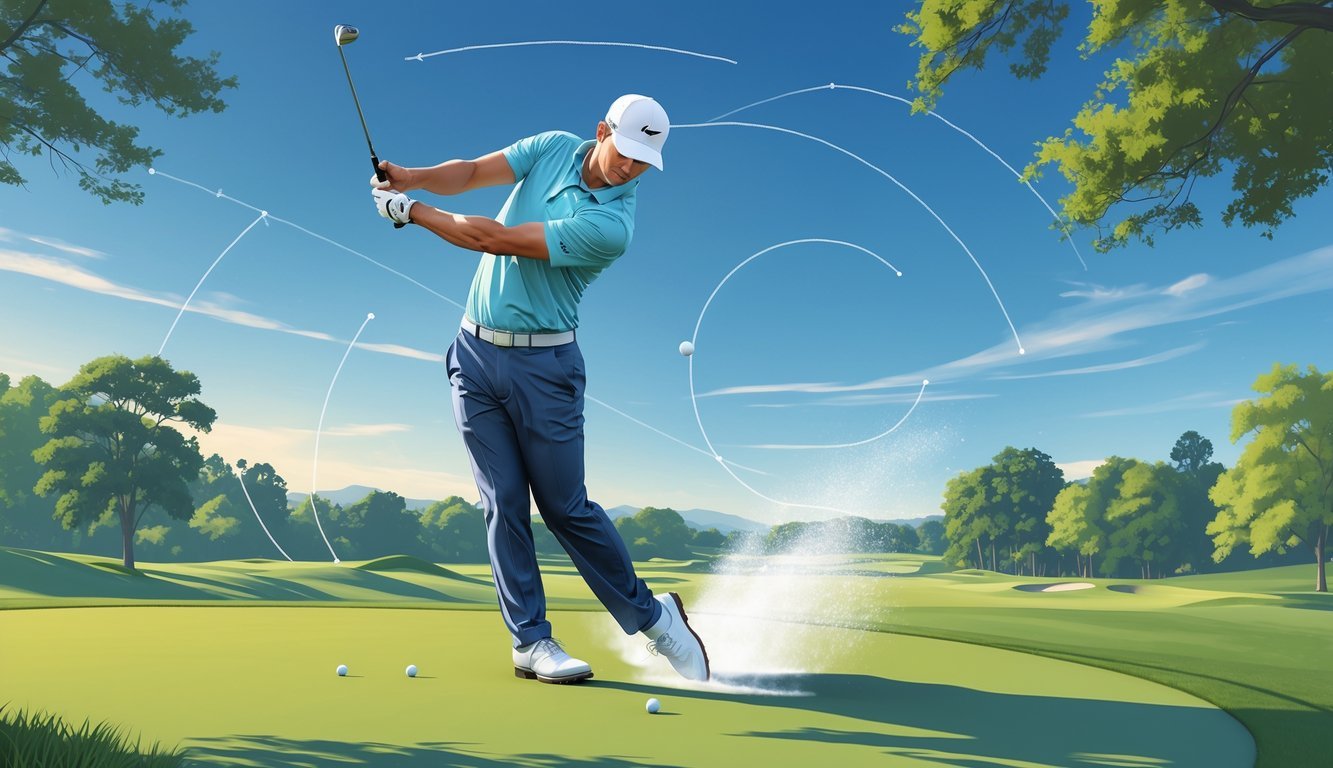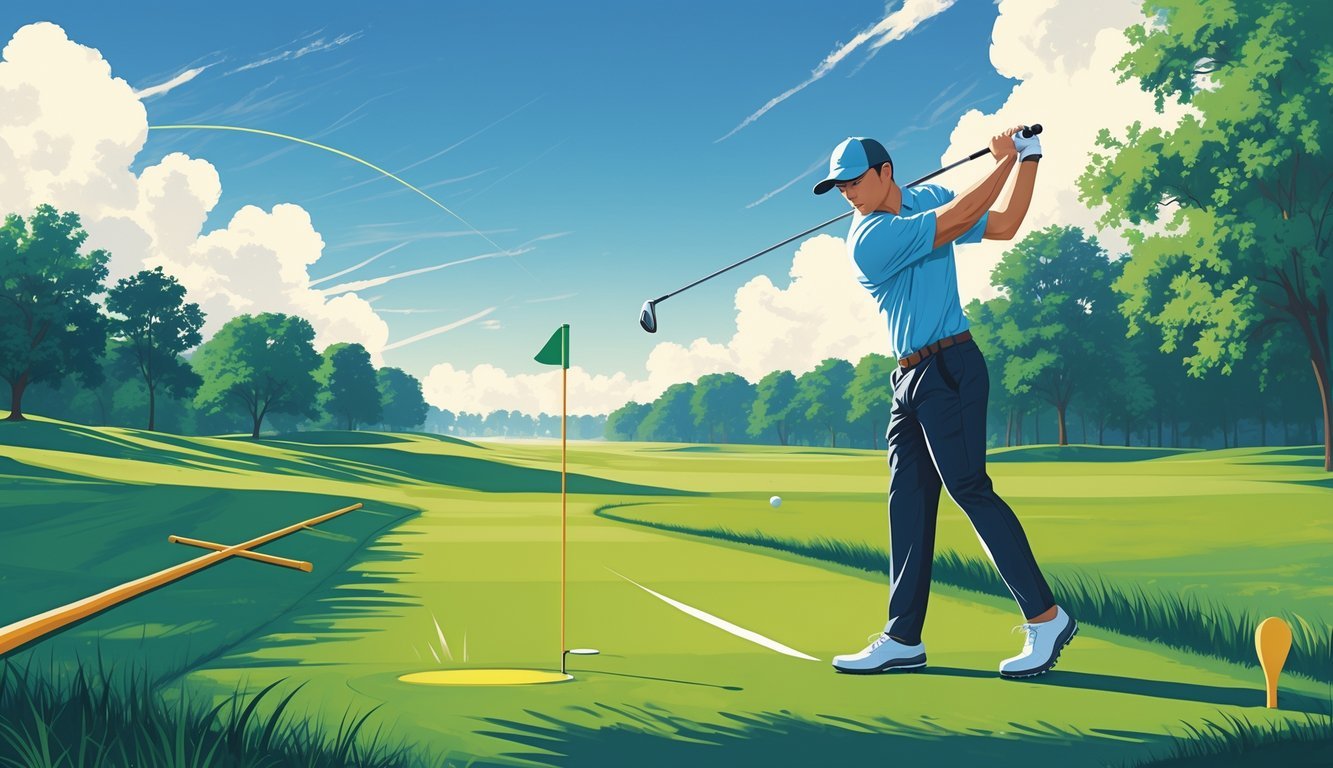PsychNewsDaily Publishers
100 Summit Drive
Burlington, MA, 01803
Telephone: (320) 349-2484
PsychNewsDaily Publishers
100 Summit Drive
Burlington, MA, 01803
Telephone: (320) 349-2484
Hitting a driver straight requires proper setup, alignment, and a smooth swing. Key factors include ball position, grip, weight transfer, and maintaining a balanced stance.

Hitting your driver straight really matters if you want to see better accuracy from the tee box. To get your driver going straight, try teeing the ball up right, line up your shoulders with the target, and swing smoothly without trying to crush it. These steps help you avoid those frustrating slices or hooks.
You don’t need to swing out of your shoes to hit straight. A repeatable setup and swing usually lead to more consistent results.
If you practice the right stance and swing path, you’ll notice your tee shots start to behave.

Nailing a straight drive comes down to a few basics: how you set up, where you put the ball and tee, and how you grip the club. Every step affects your control, launch angle, and your ability to keep the ball on target.
Start with your feet shoulder-width apart. This gives you a solid base for both balance and power.
Spread your weight evenly between both feet. Don’t lean too far forward or backward.
Stand so your stance is square to the target line. Picture a straight line from the ball to your target.
Keep your feet, hips, and shoulders lined up with that imaginary line.
Use your base of support to stay steady during your swing. Keep your knees slightly bent. Relax your posture, but don’t slouch.
Tilt your spine a little away from the target. That helps create a better launch angle.
Don’t crowd the ball or stand too far away. Let your arms hang naturally from your shoulders when you grip the driver.
Place the ball just inside your front foot’s heel. This lets you catch the ball on the upswing, which helps with launch and distance.
Set your tee so about half the ball sits above the top edge of your driver. That gives you a bigger sweet spot and better contact.
Make sure you’re hitting the ball off the tee—not the ground—so the driver’s loft works as it should.
Using the right launch angle keeps the ball in the fairway.
Stay consistent with your ball and tee setup. Predictable placement brings predictable results.
Your grip really controls the clubface and how the ball flies. Grab the driver with your lead hand first (left for righties).
Keep your grip firm but relaxed. Don’t choke the club.
Go for a neutral grip to help keep the clubface square at impact. Too much grip pressure causes tension and slows you down.
Make sure your hands work together as a unit. Balance the pressure—enough to control the club, but loose enough for a smooth swing.
A steady grip gives you better control over trajectory and helps keep drives straight.

If you want to hit your driver straight and far, pay attention to how you move your body and club during the swing. Control your balance, your swing path, and the clubface angle. Make sure you’re hitting the sweet spot.
Managing your power, rhythm, and weight shift is key to hitting fairways more often.
Start your backswing by turning your shoulders smoothly while keeping your spine tilt steady.
Let your lead shoulder move under your chin, but don’t lose your balance.
This coiling builds power and gets you ready for a strong downswing.
Shift your weight from your back foot to your front foot as you come down.
Try not to rush this move. Staying balanced helps you control the clubhead and hit the ball where you want.
Keep your tempo steady and controlled. A balanced stance makes it easier to repeat your swing and hit more fairways.
Your swing path and the clubface angle decide if your shot goes left, right, or dead straight.
Aim for a swing path that comes from inside the target line, then moves square to the ball right at impact.
At impact, keep the clubface square—pointed right at your target. Even a little open or closed, and the ball will curve.
Set up alignment sticks during practice to check your clubface and swing path.
Small tweaks in your release can help you keep your swing path in check. That leads to more consistent, solid contact.
If you want both distance and accuracy, you need to hit the sweet spot—the center of your driver’s clubface.
Contact here gives you the best energy transfer and less vibration.
Position the ball just inside your lead heel. That helps you catch it on the upswing and boost clubhead speed.
Focus on generating speed, but don’t lose your balance.
Try drills that help you find the center of the face. For example, place a towel just behind the ball—if you miss the towel, you probably struck the ball cleanly.
Power comes from good rhythm and proper weight transfer.
Don’t try to swing too fast right from the start. Build speed smoothly as you come down.
Let your weight shift naturally from your back foot to your front foot. This move adds both power and control.
Keep your rhythm steady. If you pause at the top or rush, your shots get wild.
A balanced follow-through shows you managed your power and rhythm well.
When you keep your swing balanced and under control, your driver shots start landing where you want.

Your grip, stance, and swing all play a role in hitting the driver straight. Simple tweaks—like ball position and body alignment—can make a noticeable difference.
Avoiding common mistakes and practicing specific drills really pays off.
Place the ball in line with your lead heel to center your swing. Stay balanced and focus on swinging smoothly, not forcefully.
Your grip controls the clubface angle. A neutral grip keeps the clubface square at impact. Don’t squeeze too tightly; tension leads to mistakes.
Don’t put the ball too far forward in your stance. Swinging too hard often leads to slices or hooks. Also, avoid standing too close or too far from the ball.
Line your shoulders parallel to the target line. Keep your feet and hips even. Let your driver rest behind the ball on a slight arc for better control.
Practice swinging with a focus on balance. Use a mirror or video to check your stance and swing path. Try tee drills that help you hit the ball squarely.
Try starting with a slower, more controlled swing. This helps you build up consistency.
Once you feel steady, you can gradually pick up speed. Just make sure you don’t lose your balance along the way.
Pay attention to your timing and keep your rhythm smooth. If it feels off, don’t be afraid to dial it back a bit.